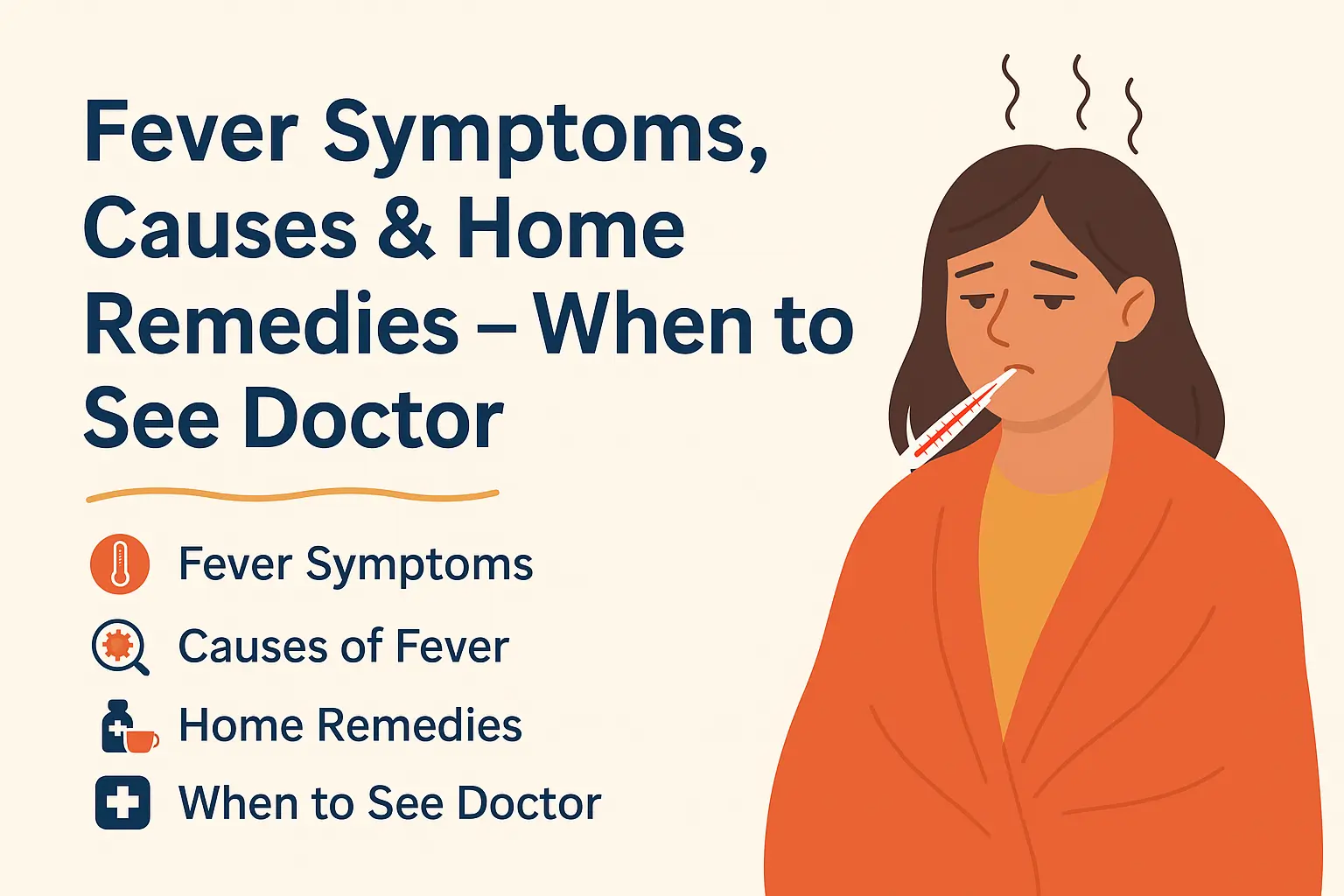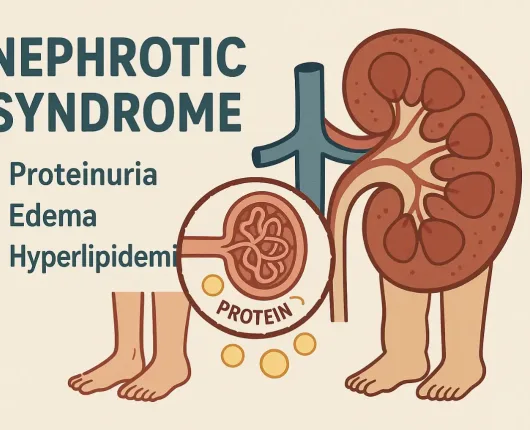-
 By Dr. Ashish
By Dr. Ashish
- September 12, 2025
- 0 Comments
- Uncategorized
What Is Fever?
A fever (high temperature or pyrexia) occurs when body temperature rises above 100.4°F (38°C). Fever is usually a symptom of infection or inflammation, not a disease itself.
Fever Symptoms
– High body temperature above 100.4°F (38°C)
– Sweating and chills
– Headache and muscle pain
– Loss of appetite
– Fatigue and irritability
What Causes Fever?
Basic Reason: Fever happens when the brain’s hypothalamus raises body temperature to fight infections and boost immunity.
– Viral infections (flu, dengue, COVID-19)
– Bacterial infections (typhoid, pneumonia, UTI)
– Heatstroke and dehydration
– Vaccination response
– Autoimmune diseases
How to Manage Fever at Home
– Drink fluids like water, ORS, herbal teas
– Rest and avoid strenuous activity
– Wear light clothes
– Apply cool compress on forehead and neck
– Warm soups and ginger tea boost immunity
Medications for Fever
– Paracetamol (Acetaminophen) – first choice for fever
– Ibuprofen – reduces fever and inflammation
– Antibiotics – only for bacterial fever, doctor prescribed
When to See a Doctor
– Fever lasts more than 3 days
– Temperature above 103°F (39.4°C)
– Recurrent or unexplained fever
– Children under 2 years with temperature above 100.4°F (38°C)
How to Prevent Fever
– Wash hands frequently
– Maintain hydration
– Balanced diet with Vitamin C and zinc
– Adequate sleep and exercise
– Stay up to date with vaccinations
External Resources:
– WHO on Fever: https://www.who.int/health-topics/fever
– Mayo Clinic Fever Causes: https://www.mayoclinic.org/diseases-conditions/fever/symptoms-causes/syc-20352759
– NHS Fever Guide: https://www.nhs.uk/conditions/fever-in-adults/
– CDC Fever Information: https://www.cdc.gov/fever/





